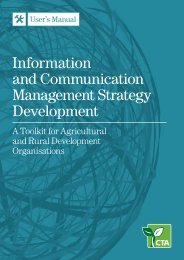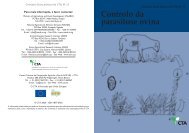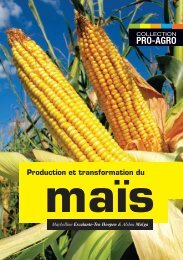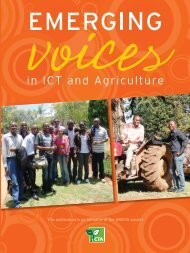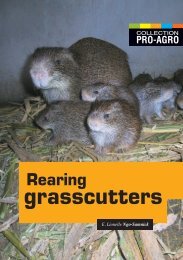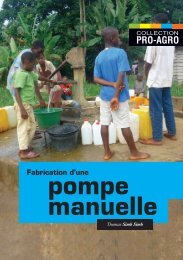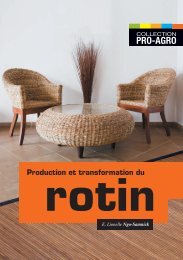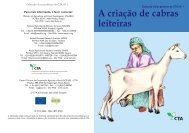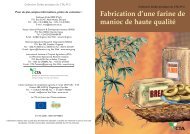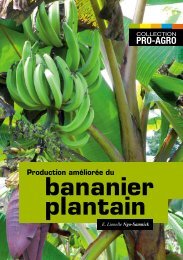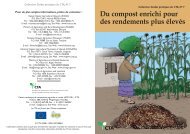Policy framework for Pastoralism in Africa
Policy framework for Pastoralism in Africa
Policy framework for Pastoralism in Africa
- No tags were found...
Create successful ePaper yourself
Turn your PDF publications into a flip-book with our unique Google optimized e-Paper software.
pastoral areas <strong>in</strong>clude the use of livestock, as exchanges with<strong>in</strong> or between families, or <strong>for</strong> ceremonialpurposes. Dowry and bride wealth payments often focus on livestock transactions.A key local <strong>in</strong>dicator <strong>for</strong> pastoral economies is the terms of trade between livestock and cereals.This is because most pastoral households cannot meet their food requirements from livestockproducts alone, and so sell livestock to buy cereals such as maize or sorghum. The terms of tradeare especially important <strong>for</strong> poorer households, and at times of drought, follow a typical trend ofdecreas<strong>in</strong>g livestock prices and ris<strong>in</strong>g cereal prices. In part, this trend expla<strong>in</strong>s the high levels offood <strong>in</strong>security <strong>in</strong> pastoral areas dur<strong>in</strong>g drought, especially among children and when livestockmilk production has ceased.There is also <strong>in</strong>creas<strong>in</strong>g attention to the economic value of the ecosystem services <strong>in</strong> pastoral areas,associated with global climate change and the concept of carbon trad<strong>in</strong>g. Initial research highlightsthe potential of <strong>Africa</strong>’s vast rangelands.2.3.1 Northern <strong>Africa</strong>In northern <strong>Africa</strong> much of the marg<strong>in</strong>al drylands are home to pastoral communities. This land rangesfrom 22.3 million hectares <strong>in</strong> Libya, to 32.4 million hectares <strong>in</strong> Algeria. Across <strong>Africa</strong>, the highestcontribution of the livestock sub-sector to agricultural GDP is recorded <strong>in</strong> Algeria, at 50 percent.This demonstrates the socio-economic importance of pastoralism <strong>in</strong> this part of the cont<strong>in</strong>ent.2.3.2 Western <strong>Africa</strong>In Western <strong>Africa</strong>, there is a wide variation <strong>in</strong> the size of national economies. The contribution ofthe livestock sector to agricultural GDP, ranges from 5 percent <strong>in</strong> Côte d’Ivoire to 44 percent <strong>in</strong>Mali. The livestock sector also provides employment <strong>for</strong> about 50 percent of the economically activepopulation. Livestock is an important factor of <strong>in</strong>tegration <strong>in</strong> the region as cattle, sheep and goatsare major items exported from land-locked Sahelian countries to humid and sub-humid coastalcountries. However, the regional supply of meat and dairy products is far lower than demand,result<strong>in</strong>g <strong>in</strong> a large net importation livestock products; this trend is expected to <strong>in</strong>crease <strong>in</strong> future.2.3.3 Central <strong>Africa</strong>In central <strong>Africa</strong>, particularly <strong>in</strong> Chad, Cameroon and CAR, pastoralism plays a major role <strong>in</strong>livestock production. The contribution of livestock to the GDP <strong>in</strong> these countries is estimated at27 percent <strong>in</strong> Chad, 13 percent <strong>in</strong> Cameroon and 9 percent <strong>in</strong> CAR. The level of poverty <strong>in</strong> pastoralcommunities rema<strong>in</strong>s higher than the average level of 44 per cent. Intra-regional trade <strong>in</strong> livestockand livestock products is a feature of this region, with these three countries hav<strong>in</strong>g the opportunityto export to the Republic of Congo, Gabon, Equatorial Gu<strong>in</strong>ea, and Sao Tome and Pr<strong>in</strong>cipe.However, significant price differentials have been observed rang<strong>in</strong>g from 32 percent betweenCameroon and Gabon, to 118 per cent between Chad and Equatorial Gu<strong>in</strong>ea. Despite the highpurchas<strong>in</strong>g power <strong>in</strong> the oil produc<strong>in</strong>g countries (e.g., Republic of Congo, Gabon, EquatorialGu<strong>in</strong>ea, and Sao Tome and Pr<strong>in</strong>cipe) their capacity to absorb livestock products from Chad,Cameroon and CAR is limited due to small populations. For this reason, Chad sells most of itscattle on-the-hoof to Nigeria, a highly populated country with a much larger market.In the humid <strong>for</strong>est zone of Central <strong>Africa</strong>, countries emerg<strong>in</strong>g from conflicts (e.g., DRC, Rwanda,Secur<strong>in</strong>g, Protect<strong>in</strong>g and Improv<strong>in</strong>g the Lives, Livelihoods and Rights of Pastoralist Communities17




